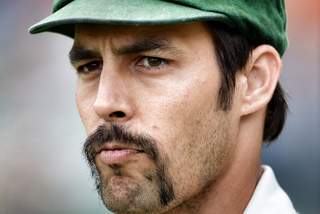It’s always unsettling to read about a woman who isn’t into feminism – it’s like meeting a child who doesn’t like ice-cream, or an old person who doesn’t like Midsomer Murders.
British columnist Julia Hartley-Brewer wrote a piece for the London Telegraph last week, published in The Age on Wednesday, which decried feminists for lambasting Pretenders singer Chrissie Hynde for her remarks on rape – specifically that it can be a woman’s fault if they are the victim of sexual assault.
Like many who have a go at feminists, Hartley-Brewer uses terms such as shrill and squealing – and therefore worth blocking out, not listening to. Phrases such as “cue outraged squeals … from the Sisterhood” seek to reduce the voicing of legitimate concerns to the meaningless sounds of children or animals. (If only women had deeper voices, how much easier equal rights would be to achieve!) Even the repetitive use of the word “Sisterhood” conjures up images of the terrifying witches or “weird sisters” from Shakespeare’s Macbeth, clustered around a cauldron and plotting the downfall of men.
Hartley-Brewer writes that “Miss Hynde, once seen as a strong feminist role model, had unwittingly breached the first rule of the Sisterhood club: if you want to belong, then you have to conform”. However, the widespread outraged reaction to the singer’s remarks was not due to wanting Hynde to conform to a prescribed form of feminism – it is about the fear we feel when a strong female voice reinforces the notion that women are to blame for violence against them.
Advertisement
It has taken years and years of work to shift this paradigm ever so slightly and to encourage victims, who too often stay quiet to avoid such censure, to report these crimes. Every time a policeman suggests that women shouldn’t walk alone in parks (such as after the murder of Melbourne schoolgirl Masa Vukotic) or dress provocatively (such as the Canadian police officer who said women should avoid dressing like sluts in order not to be victimised), women are pushed further into the category of stupid provocateurs, with the implication that the aggressors simply cannot help themselves.
This needs to change.
It is difficult to talk about rape. It is a complex subject, combining violence, firmly rooted prejudices and women’s precarious role in society. Like most women I know, I always text my friends after a night out to make sure they got home safely, and encourage them to take a cab instead of walk. But there is a difference between seeking to minimise risk, and blaming the victim.
If a young man working at a 7-Eleven is punched in the face during a midnight robbery, he will always be seen as the victim – no one will suggest that he brought it on himself or was “asking for it” by working in an all-night convenience store. But if a woman is raped, the most common questions asked include: What was she wearing? How much had she had to drink? Did she take adequate precautions to protect her drink from being spiked? Was she flirting with the man? Had she given him the wrong idea? Why was she out by herself?
Blaming the victim is a horrible phenomenon that seems to occur when people are already marginalised in society. Bike riders are regarded in Australia’s car-friendly cities as inferior beings. I know this because after I was slammed into by a car, suffering fractures in a cheekbone and two of the vertebrae in my neck, the most common reaction from authority figures was: Were you going too fast? Did you have your lights on? Were you riding on a busy road? Were you wearing an adequate amount of bright yellow?
I had sought to minimise risk by riding along a quiet street on a bright sunny morning. I was struck by a car which charged through a roundabout without giving way. And yet the police refused to admit the fault of the driver, and did not even wish to discuss the matter with me. To be wrongly suspected of somehow causing a traumatic event is hugely distressing.
For Hynde to say that she took “full responsibility” for being raped, due to being drunk and high when she went with an Ohio motorcycle gang to what she thought was a party, angered and alarmed many people who are trying to make it easier for victims to report sexual violence. Comments like Hynde’s, which blame women for “enticing” rapists, support the dangerous narrative that a woman is always to blame for horrendous things which happen to her.
While Hynde may have made unwise or reckless decisions, those who perpetrate violence are always to blame, not those who are attacked.









Recent Comments